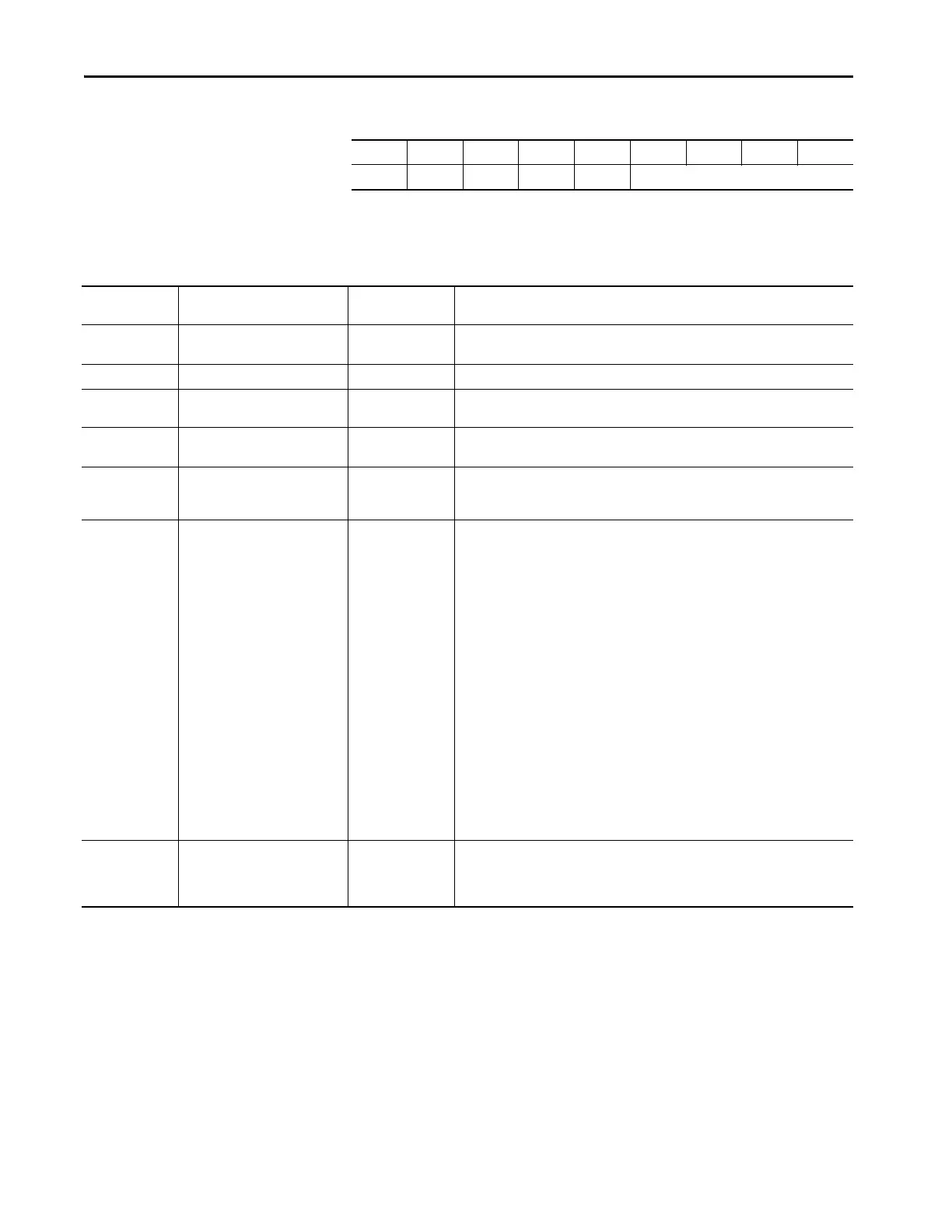486 Rockwell Automation Publication 1444-UM001D-EN-P - June 2018
Appendix A CIP Objects
Channel Select
The Dynamix 1444 returns the following as part of an 0x4C Advanced CM
Data Record Request.
Bit 01234567
Channel 0123 Reserved
Table 232 - 0x4C Advanced CM Data Record Request
Byte Offset
Within Structure
Structure Member Data Type Description
0 SessionInstance USINT The host copies the SessionInstance returned here into each subsequent CM Record
Request. Up to three instances are supported.
1 DynamicChannel USINT Indicates the dynamic channel for this record. Channels 0…3 are valid channels.
2 Completed Records UINT This is incremented each time that another complete record has been transferred. There are
often several packets per completed record.
4 RecordSize UDINT For a given session, the RecordSize returned here is fixed. RecordSize is in bytes and
describes the appropriate Record Type Structure.
8 PacketCountDown DWORD The host copies the PacketCountDown returned here into each subsequent CM Record
Request. When the PacketCountDown reaches 0, the session is complete and the final value
in CompletedRecords is all that is transferred.
12 Status DINT Status codes:
0: eSUCCESS
Returned after all successful requests.
1. eUnrecognizedSession
2. eMaxSessionsReached
3. ePacketCountOutOfSequence
4. eInvalidBufferSelect
5. eNoDataAvailable
6. eGeneralError
7. eDeniedRequestAlreadyInProgress
8. eSessionAccessDenied
9. eAdvancedMeasurementRequestinProgress
When returned, the host can retry as often as required, until successful, although it is
recommended to wait for the advised processing time before you begin polling. When a
code 9 is returned, the PacketCountDown field indicates the current average count
(progress towards the requested number of averages).
10. eRequestQueued
Any code returned other than eSUCCESS (0) or eAdvancedMeasurementRequestinProgress
(9) ends the session.
16 Data Array DWORD[50] Each record is an array of DWORDs of size RecordSize. This array of records can be large. It is
the responsibility of the calling application to handle these records appropriately. The
DWORD type is just a placeholder for the actual types in the data structure that maps to this
RecordArray. See the next section for details.
